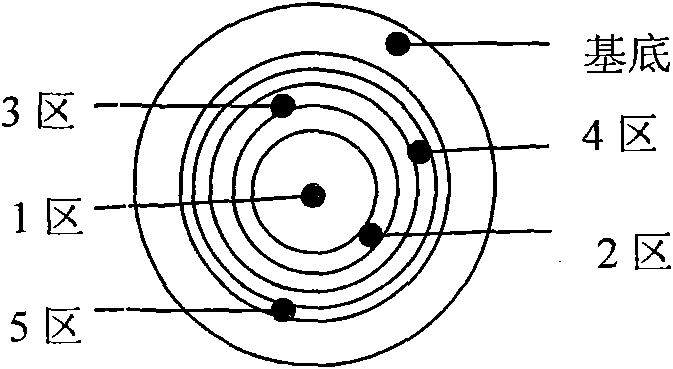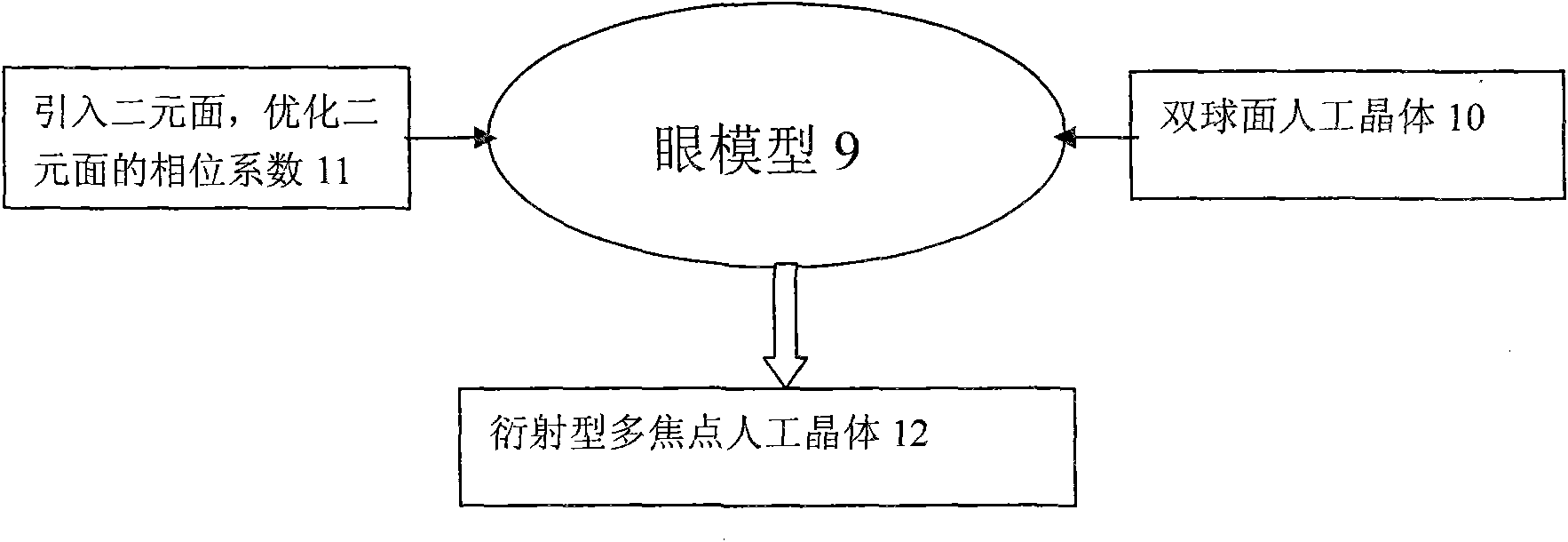Dual-focus intraocular lens design based on eye model
A technology for artificial lens and model design, applied in the field of medical equipment, can solve problems such as not considering the human cornea and not being perfect
- Summary
- Abstract
- Description
- Claims
- Application Information
AI Technical Summary
Problems solved by technology
Method used
Image
Examples
Embodiment Construction
[0023] specific implementation
[0024] (1) Design a refractive bifocal intraocular lens. Such as figure 1 As shown, in Zemax, the eye model [1] is constructed, which can be a standard eye model, such as Gullstand Le-Grand, Liou-Brennan eye model, etc., or a personality constructed based on the cornea data and eye axial length of the actual human eye Eye model.
[0025] A bispherical intraocular lens [2] is implanted in the eye model to optimize the radius of curvature and correct the defocus of the whole eye. And the bispherical artificial lens is used as the base. Using the multiple structure function in Zemax, a surface of the substrate is divided into several optical zones, and then the radius of curvature is optimized zone by zone. For example, divided into 5 optical zones, such as figure 2 As shown, the object distance is infinite as the optimization goal, and the curvature radius of the near-sight area is optimized, such as the first [3], the third [5], and the fi...
PUM
 Login to View More
Login to View More Abstract
Description
Claims
Application Information
 Login to View More
Login to View More - R&D
- Intellectual Property
- Life Sciences
- Materials
- Tech Scout
- Unparalleled Data Quality
- Higher Quality Content
- 60% Fewer Hallucinations
Browse by: Latest US Patents, China's latest patents, Technical Efficacy Thesaurus, Application Domain, Technology Topic, Popular Technical Reports.
© 2025 PatSnap. All rights reserved.Legal|Privacy policy|Modern Slavery Act Transparency Statement|Sitemap|About US| Contact US: help@patsnap.com



